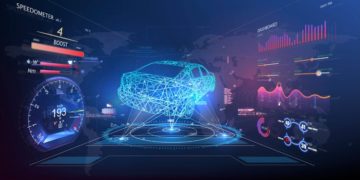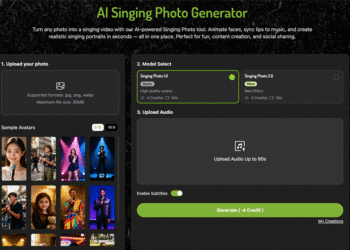Urban mobility has always been at the core of the UK’s social and economic life. With cities like London, Manchester, Birmingham, and Glasgow facing mounting congestion, pollution, and rising demand for sustainable transit, finding new solutions has become critical. Artificial Intelligence (AI) is increasingly being deployed to address these challenges, offering smarter, more efficient, and data-driven approaches to transport.
The shift toward AI-driven mobility reflects the same principle as refining a sentence with an Overchat AI rephrase & paraphrasing tool: taking something that already exists and reshaping it for clarity, efficiency, and impact. In the case of transport, AI redefines systems not by replacing them entirely but by making them work smarter, more seamlessly, and with greater adaptability to real-world demands.
The Growing Urban Mobility Challenge in the UK
The UK’s transport sector contributes significantly to both economic growth and carbon emissions. According to the Department for Transport, road traffic volumes have risen by 17% in the last two decades, while transport accounts for nearly 27% of the country’s greenhouse gas emissions.
Urban areas bear the brunt of this pressure. London drivers lose an estimated 156 hours annually due to congestion (INRIX, 2022), costing billions in lost productivity. Public transport systems, although extensive, face capacity constraints, reliability issues, and rising operational costs. These challenges highlight the urgent need for technological innovation.
How AI Is Reshaping Urban Transport
AI-Powered Traffic Management
One of AI’s most immediate applications is real-time traffic management. Systems equipped with machine learning algorithms analyze live traffic data from sensors, cameras, and GPS devices to optimize signal timings.
In Manchester, a pilot project used AI-controlled traffic signals to reduce average wait times by 20%, easing congestion during peak hours. Similar initiatives in London have integrated AI into Transport for London’s (TfL) SCOOT system, which continually adjusts traffic lights based on real-time flows.
Predictive Maintenance for Transport Infrastructure
AI-driven predictive analytics can monitor transport assets—such as buses, trains, and even bridges—to anticipate failures before they occur. For example, sensors on the London Underground collect data on vibrations and track conditions, feeding it into AI models that predict maintenance needs. This not only prevents costly breakdowns but also minimizes service disruptions for passengers.
Intelligent Public Transit Systems
AI also enhances public transit planning. By analyzing passenger flow data, ticketing patterns, and even weather forecasts, AI can adjust service frequencies and deploy resources where they are most needed. In Birmingham, machine learning models have been tested to optimize bus timetables dynamically, reducing overcrowding and improving punctuality.
AI and the Future of Shared Mobility
Ride-Hailing and Car-Sharing Platforms
Ride-hailing services like Uber already rely heavily on AI for route optimization and pricing. But beyond convenience, AI’s predictive algorithms can reduce “dead miles” (time spent driving without passengers), improving both efficiency and sustainability.
Car-sharing startups across the UK are experimenting with AI systems to predict demand hotspots, ensuring vehicles are available where and when they are most needed. This model reduces dependency on private car ownership, alleviating congestion and emissions.
Micro-Mobility and E-Scooters
E-scooter trials in cities such as Bristol and London have leveraged AI to analyze usage data, identify unsafe routes, and manage fleet distribution. For instance, AI-powered geofencing can limit scooter speeds in crowded pedestrian zones, ensuring safety while supporting last-mile connectivity.
Autonomous Vehicles and Urban Integration
Self-Driving Buses and Shuttles
Trials of autonomous buses in Scotland (CAVForth project) and self-driving shuttles in Greenwich show the potential of AI in offering reliable, demand-responsive services. These vehicles rely on advanced AI models that process sensor data for navigation, obstacle detection, and passenger safety.
The Ethical and Social Dimension
Autonomous vehicles also raise questions around liability, employment, and accessibility. Transport experts stress the importance of integrating these technologies with existing public transport rather than treating them as replacements. Inclusivity must be central: AI-driven mobility should enhance access for elderly and disabled passengers.
Environmental Impact: AI for a Greener Transport Future
Reducing Emissions through Optimization
AI’s ability to optimize traffic flows and vehicle usage directly reduces idle time and fuel consumption. A study by the Alan Turing Institute suggested that smarter routing and logistics could cut urban transport emissions by up to 15%.
Supporting EV Infrastructure
The UK government’s push toward electric vehicles (EVs) requires efficient charging infrastructure. AI can predict charging demand, optimize grid loads, and even direct drivers to the nearest available charging stations. This reduces range anxiety and supports a smoother transition to low-carbon mobility.
Barriers to Adoption
Data Privacy and Security
AI relies on vast amounts of transport data, from GPS traces to passenger ticketing. Protecting this data from misuse or cyberattacks is essential to maintain public trust.
Infrastructure and Funding Gaps
Deploying AI systems requires significant investment in sensors, connectivity, and data platforms. Smaller cities may lack the resources to implement large-scale smart transport solutions without national or private-sector support.
Equity and Accessibility
There is a risk that AI-powered solutions disproportionately benefit affluent urban centers while leaving rural or marginalized communities behind. Policymakers must ensure equitable distribution of AI-enabled transport innovations.
The Road Ahead: Policy and Collaboration
Government Strategy
The UK government’s Future of Mobility: Urban Strategy emphasizes the role of AI in achieving sustainable, connected, and inclusive transport. Continued investment in research partnerships—such as the Centre for Connected and Autonomous Vehicles (CCAV)—is vital.
Academia-Industry Collaboration
Universities, AI labs, and transport operators are already collaborating to pilot AI projects in real-world conditions. Expanding such initiatives will accelerate innovation while training the next generation of experts in mobility and data science.
Public Engagement
Ultimately, the success of AI in urban transport depends on public acceptance. Transparent communication about benefits, risks, and safeguards will be crucial in building trust.
Conclusion
AI offers transformative solutions to the UK’s urban mobility challenges. From traffic optimization and predictive maintenance to shared mobility and autonomous vehicles, the technology promises a future of faster, greener, and more reliable transport.
Yet, as experts highlight, the transition requires careful balancing: safeguarding privacy, ensuring equity, and integrating AI within existing transport systems. Done responsibly, AI will not replace human decision-making but empower cities to make smarter choices, ensuring that the UK’s urban mobility systems are not just efficient, but also sustainable and inclusive.
David Prior
David Prior is the editor of Today News, responsible for the overall editorial strategy. He is an NCTJ-qualified journalist with over 20 years’ experience, and is also editor of the award-winning hyperlocal news title Altrincham Today. His LinkedIn profile is here.













































































